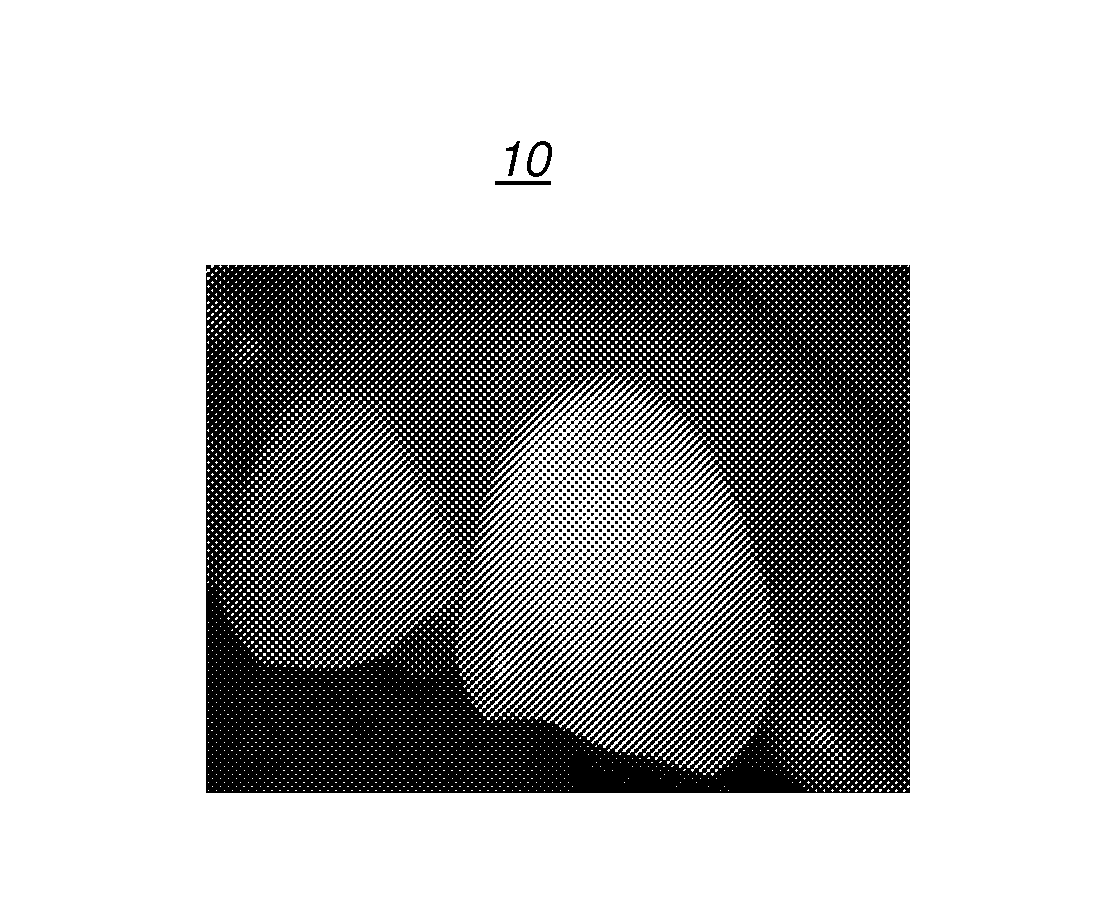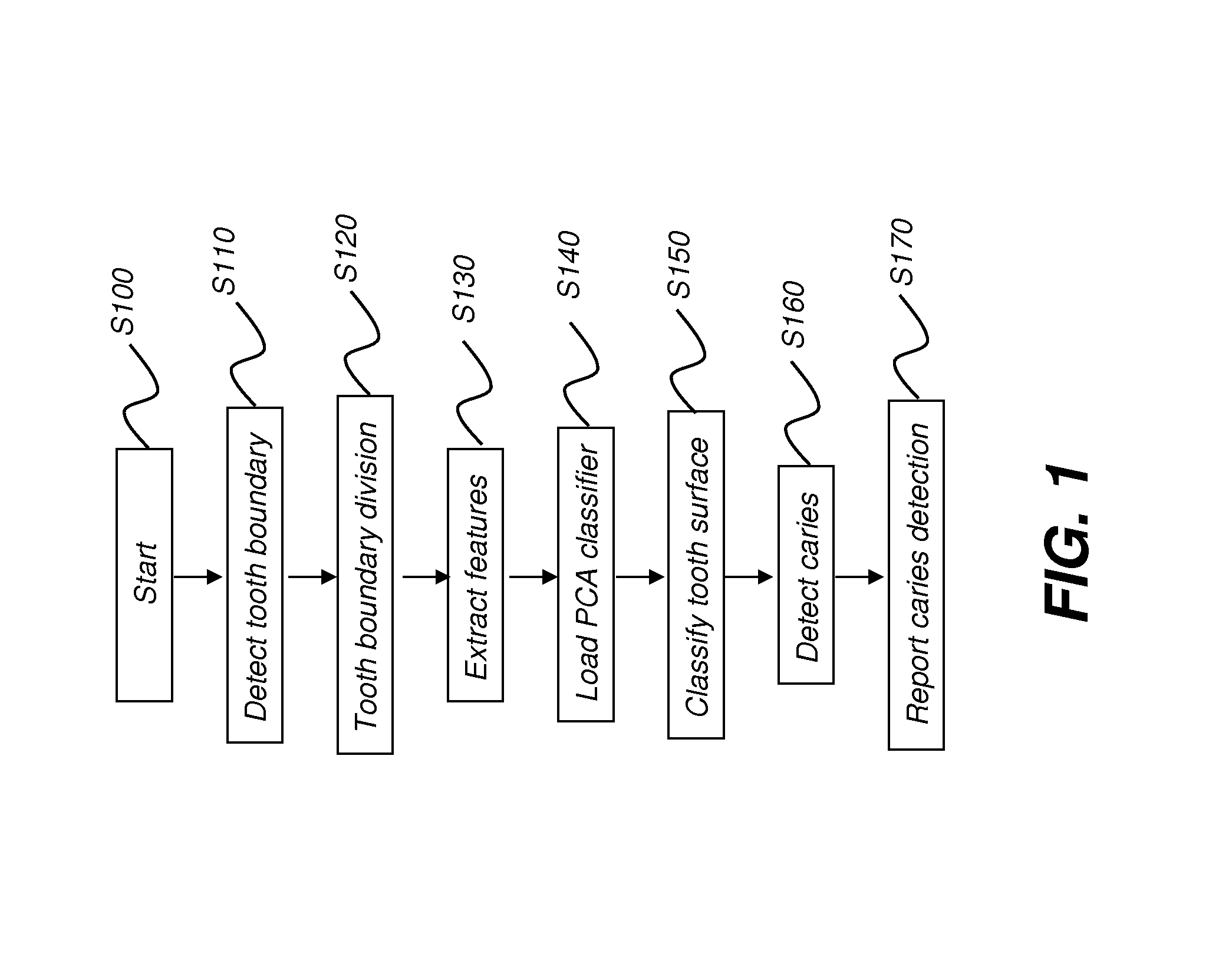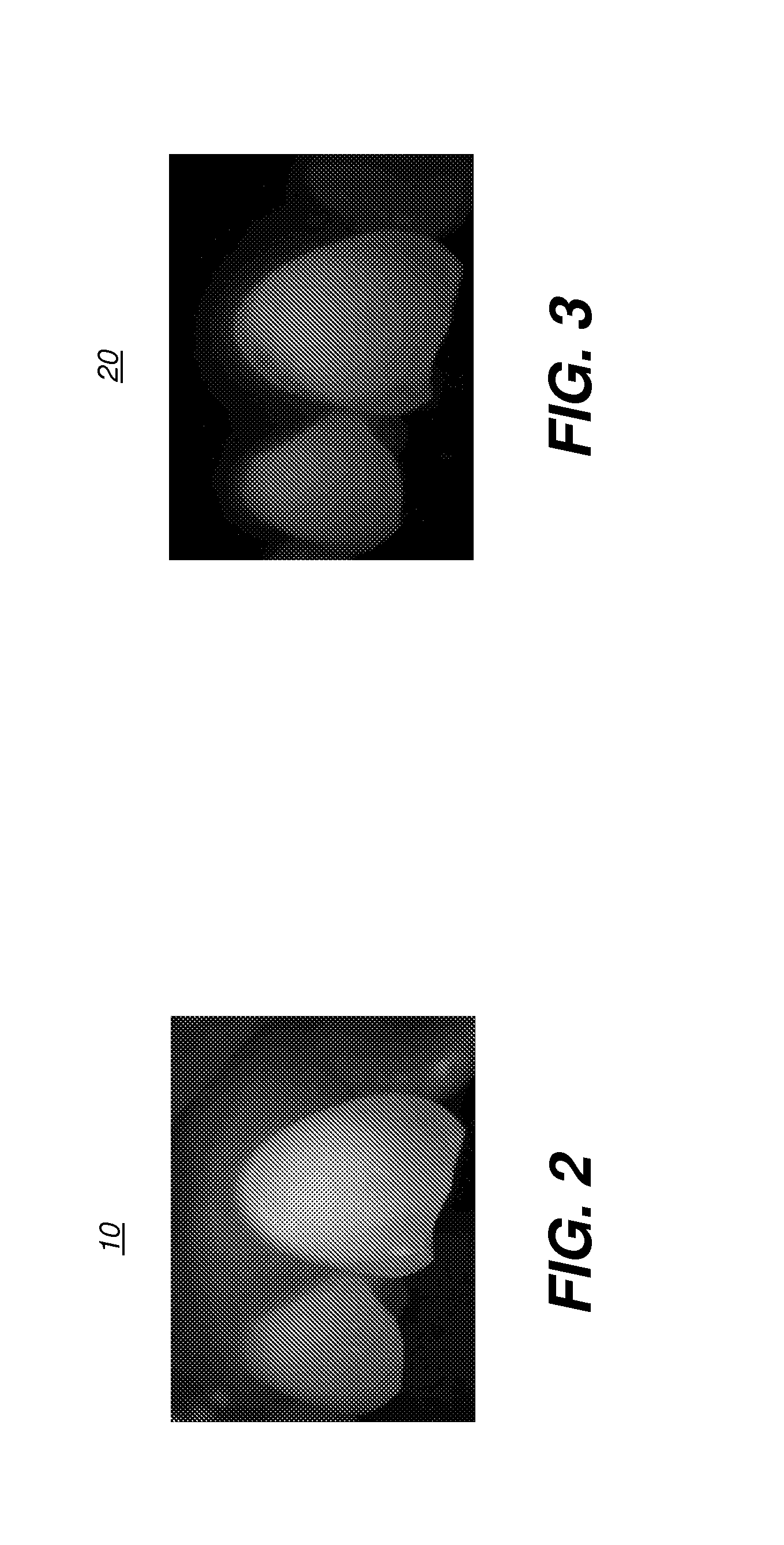Method for tooth surface classification
a classification method and technology for teeth, applied in the field of intraoral and dental imaging, can solve the problems of permanent tooth damage and even tooth loss, exposure to x-ray radiation, risk of damaging weakened teeth, spreading infection with tactile methods, etc., and achieve the effect of reducing the number of false positives and accurately classifying tooth surfaces
- Summary
- Abstract
- Description
- Claims
- Application Information
AI Technical Summary
Benefits of technology
Problems solved by technology
Method used
Image
Examples
Embodiment Construction
[0035]The following is a detailed description of the preferred embodiments of the invention, reference being made to the drawings in which the same reference numerals identify the same elements of structure in each of the several figures.
[0036]This application claims priority to U.S. Provisional Application No. 61 / 454,761 filed on Mar. 21, 2011 entitled, “A METHOD FOR TOOTH SURFACE CLASSIFICATION”, incorporated herein in its entirety by reference.
[0037]Where they are used, the terms “first”, “second”, “third”, and so on, do not necessarily denote any ordinal or priority relation, but may be used for more clearly distinguishing one element or time interval from another.
[0038]The term “highlighting” for a displayed feature has its conventional meaning as is understood to those skilled in the information and image display arts. In general, highlighting uses some form of localized display enhancement to attract the attention of the viewer. Highlighting a portion of an image, such as an ...
PUM
 Login to View More
Login to View More Abstract
Description
Claims
Application Information
 Login to View More
Login to View More - R&D
- Intellectual Property
- Life Sciences
- Materials
- Tech Scout
- Unparalleled Data Quality
- Higher Quality Content
- 60% Fewer Hallucinations
Browse by: Latest US Patents, China's latest patents, Technical Efficacy Thesaurus, Application Domain, Technology Topic, Popular Technical Reports.
© 2025 PatSnap. All rights reserved.Legal|Privacy policy|Modern Slavery Act Transparency Statement|Sitemap|About US| Contact US: help@patsnap.com



